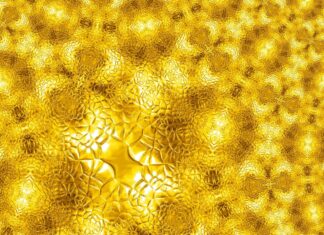Viper’s Bowstring Hemp is a remarkable plant that has garnered increasing attention and recognition for its multifaceted uses, ecological significance, and potential economic contributions. This versatile hemp variety, known for its exceptionally strong and durable fibers, has a rich history deeply intertwined with human civilization. In this comprehensive exploration, we will delve into the world of Viper’s Bowstring Hemp, examining its origins, characteristics, cultivation methods, historical significance, and contemporary applications.
Viper’s Bowstring Hemp, scientifically known as Sansevieria trifasciata, is a perennial plant native to West Africa. It belongs to the Asparagaceae family and is renowned for its robust, sword-shaped leaves and the remarkable strength of its fibers. While Viper’s Bowstring Hemp has primarily been cultivated for its ornamental value and for air purification purposes, it possesses a hidden potential that extends far beyond its visual appeal.
The name “Viper’s Bowstring Hemp” is derived from its appearance and the traditional use of its fibers. The plant’s long, pointed leaves are reminiscent of the shape of a viper’s fangs, while the term “bowstring” alludes to the strength and flexibility of its fibers, which were historically used for crafting bowstrings.
Cultivation of Viper’s Bowstring Hemp dates back centuries, with evidence of its utilization by indigenous communities in West Africa for various purposes. The plant’s ability to thrive in arid and semi-arid regions made it a valuable resource for these communities, where it was used for crafting materials, cordage, and textiles. Additionally, the plant’s air-purifying properties made it a popular choice for enhancing indoor air quality.
The fibers extracted from Viper’s Bowstring Hemp are exceptionally strong and durable, rivaling some of the toughest natural fibers known. These fibers are extracted from the plant’s leaves through a process of retting, scraping, and drying. Once processed, they can be spun into threads and used for a wide range of applications, from traditional bowstrings and fishing lines to contemporary uses in textiles, cordage, and various industrial products.
One of the remarkable aspects of Viper’s Bowstring Hemp is its adaptability to different environmental conditions. It thrives in arid and semi-arid regions, making it a suitable crop for areas with limited water resources. This adaptability is a significant advantage, as it reduces the environmental impact associated with water-intensive crops. Furthermore, Viper’s Bowstring Hemp requires minimal pesticides and herbicides, making it a relatively low-maintenance crop.
The cultivation of Viper’s Bowstring Hemp has historically played a crucial role in the livelihoods of communities in West Africa. Its fibers provided a valuable source of income and materials for various traditional crafts. The plant’s economic significance is not limited to its fibers; its leaves have also been used for medicinal purposes, and its air-purifying properties made it a desirable addition to homes and gardens.
In recent years, as sustainability and eco-friendliness have gained prominence, Viper’s Bowstring Hemp has garnered renewed interest. Its potential as a sustainable crop for various industries has sparked research and experimentation in different parts of the world. The plant’s resilience, low water requirements, and minimal need for chemical inputs make it an attractive candidate for sustainable agriculture.
One of the promising applications of Viper’s Bowstring Hemp lies in the textile industry. The fibers extracted from the plant have the potential to be used in the production of durable and environmentally-friendly textiles. These textiles can find applications in various sectors, including fashion, home furnishings, and industrial fabrics. Additionally, the use of Viper’s Bowstring Hemp in textiles aligns with the growing demand for sustainable and natural fiber alternatives to synthetic materials.
The versatility of Viper’s Bowstring Hemp extends beyond textiles. The strong and durable fibers are also suitable for manufacturing ropes, twines, and cordage. These products have applications in agriculture, construction, shipping, and many other industries where strength and reliability are essential. The utilization of Viper’s Bowstring Hemp in cordage production can reduce the reliance on synthetic materials, contributing to a more sustainable and eco-friendly future.
Another area where Viper’s Bowstring Hemp can make a significant impact is in the production of paper and pulp. The plant’s fibers are ideal for creating paper products with excellent tensile strength and durability. By incorporating Viper’s Bowstring Hemp into the papermaking process, it is possible to produce high-quality paper products while reducing the need for virgin wood pulp, thus conserving forests and promoting sustainable forestry practices.
The potential applications of Viper’s Bowstring Hemp in various industries have not gone unnoticed by researchers and entrepreneurs. Initiatives are underway to explore its cultivation on a larger scale and develop innovative technologies for processing its fibers efficiently. These efforts aim to harness the full potential of Viper’s Bowstring Hemp as a sustainable and versatile resource.
Apart from its economic potential, Viper’s Bowstring Hemp offers ecological benefits. Its ability to thrive in arid regions and resist pests without the need for chemical interventions makes it an environmentally-friendly crop. Additionally, the plant’s air-purifying qualities, as demonstrated in indoor environments, suggest that its cultivation in outdoor settings could contribute to improved air quality and ecosystem health.
The historical significance of Viper’s Bowstring Hemp cannot be overlooked. For generations, it has played a pivotal role in the lives of communities in West Africa, providing materials for crafts, livelihoods, and even medicine. Preserving and honoring this cultural heritage is an essential aspect of the plant’s revival and modern applications.
In conclusion, Viper’s Bowstring Hemp is a remarkable plant with a rich history and untapped potential. Its strong and durable fibers make it an attractive candidate for sustainable agriculture, with applications ranging from textiles and cordage to paper production. Its adaptability to arid environments and minimal need for chemical inputs align with the principles of eco-friendliness and sustainability.
As the world continues to seek sustainable alternatives to traditional crops and materials, Viper’s Bowstring Hemp stands as a promising solution. Its revival and integration into modern industries have the potential to benefit both the environment and communities that have cultivated it for generations. As research and innovation in Viper’s Bowstring Hemp continue to advance, its significance in sustainable agriculture and various industries is likely to grow, contributing to a more sustainable and eco-friendly future.






















